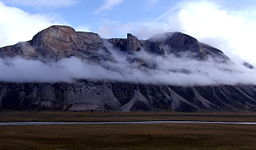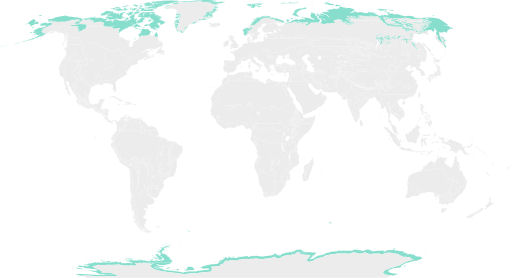Biosphere Contents
6. Biomes
Tundra regions are characterised by very low temperatures, dark winters and strong winds

In winter, the air temperature of tundra regions can be as low as -55°C and the ground freezes to a considerable depth. Water is permanently frozen in the sub soil and this is referred to as permafrost. In mid-winter tundra regions above the Arctic Circle are in darkness, whilst in the high summer the sun never sets. As even the upper soil horizon is frozen in winter, water is only available during the summer months. The tundra regions are also characterised by very strong winds. Despite these harsh conditions organisms have adapted to this environment. They are typically lichens, mosses and low lying shrubs which rarely grow above 50 cm. They are perennial and adapted to grow and reproduce in the short growing season of less than 60 days.
Animal life in the tundra is marked by dramatic seasonal cycles. Caribou, arctic fox, musk oxen, rabbits and polar bears have all adapted to the harsh cold environment through growing thick fur. They also tend to migrate in the winter. Insects are seasonal inhabitants and swarms of mosquitoes plague the tundra during the short summer. An astounding diversity of migratory birds visit the tundra to breed and feed off the insect population during the summer months.

Tundra occurs around the Arctic Circle, beyond the tree line. Small areas also occur on sub-Antarctic islands. Alpine vegetation is found in similar climatic conditions at high altitude (including some tropical mountains).
What are the main characteristics of the tundra biome?